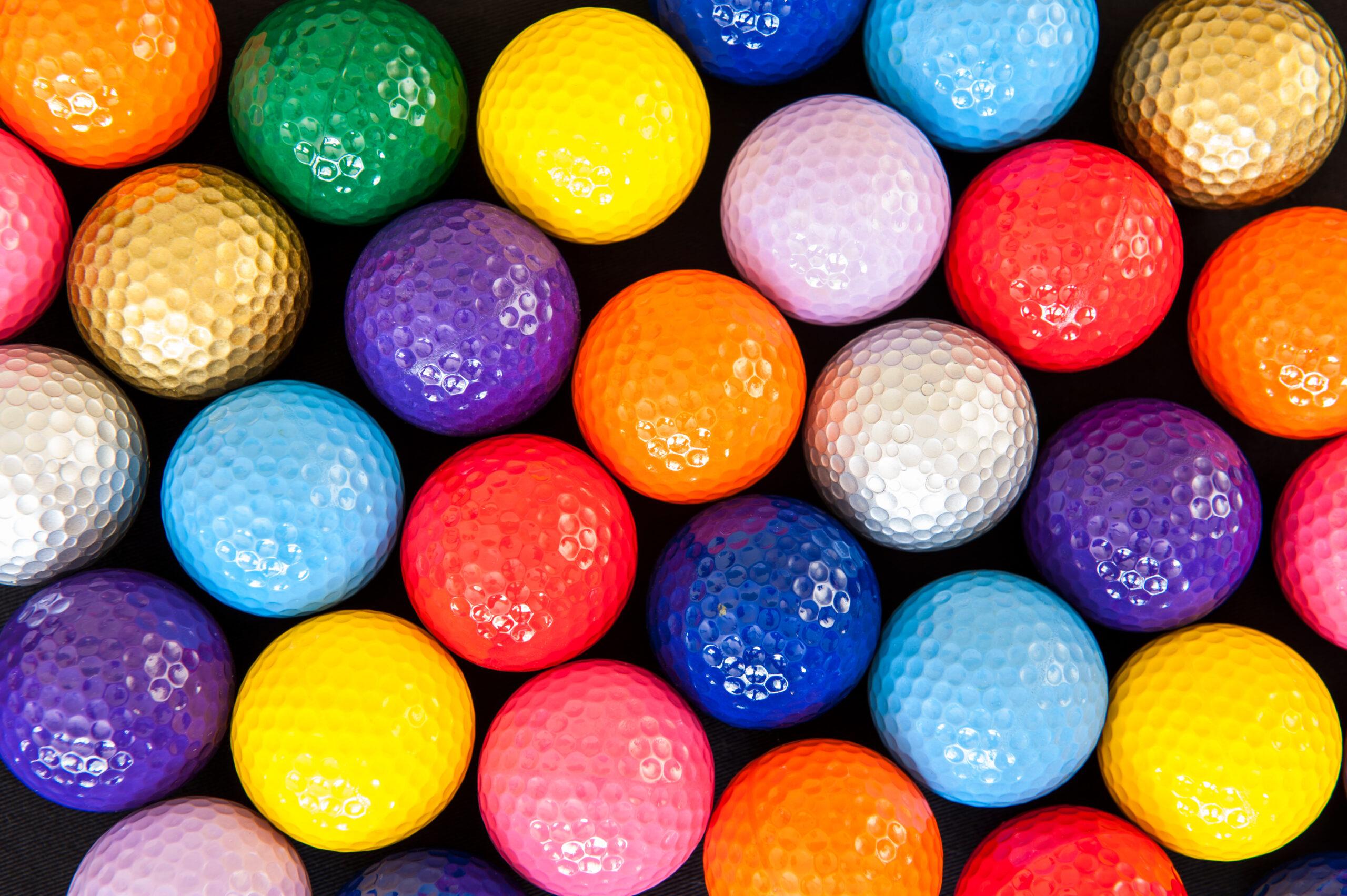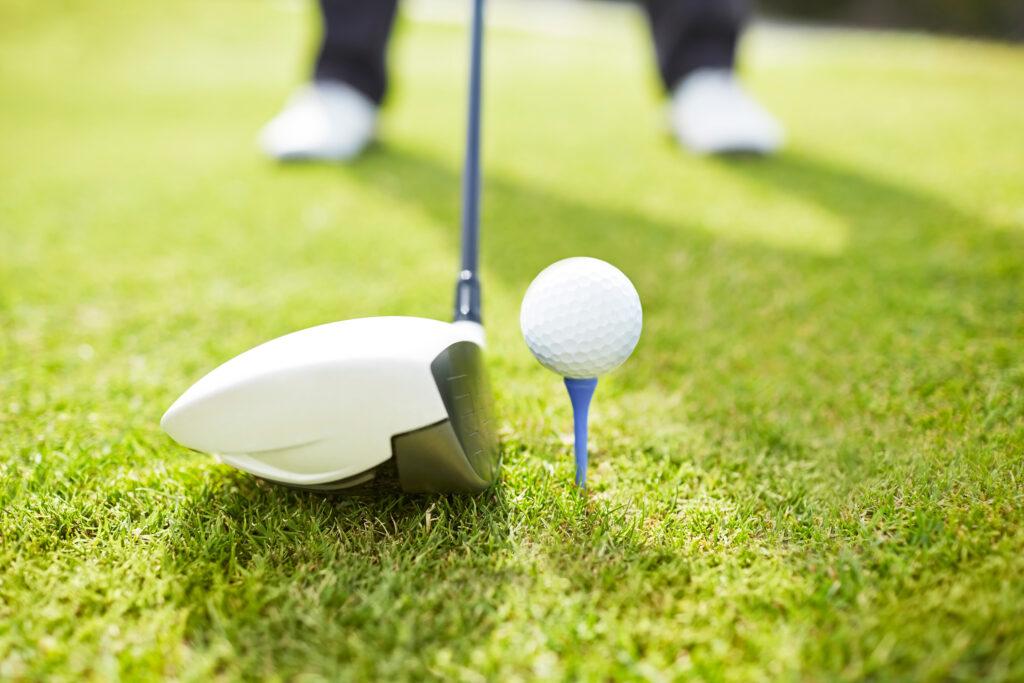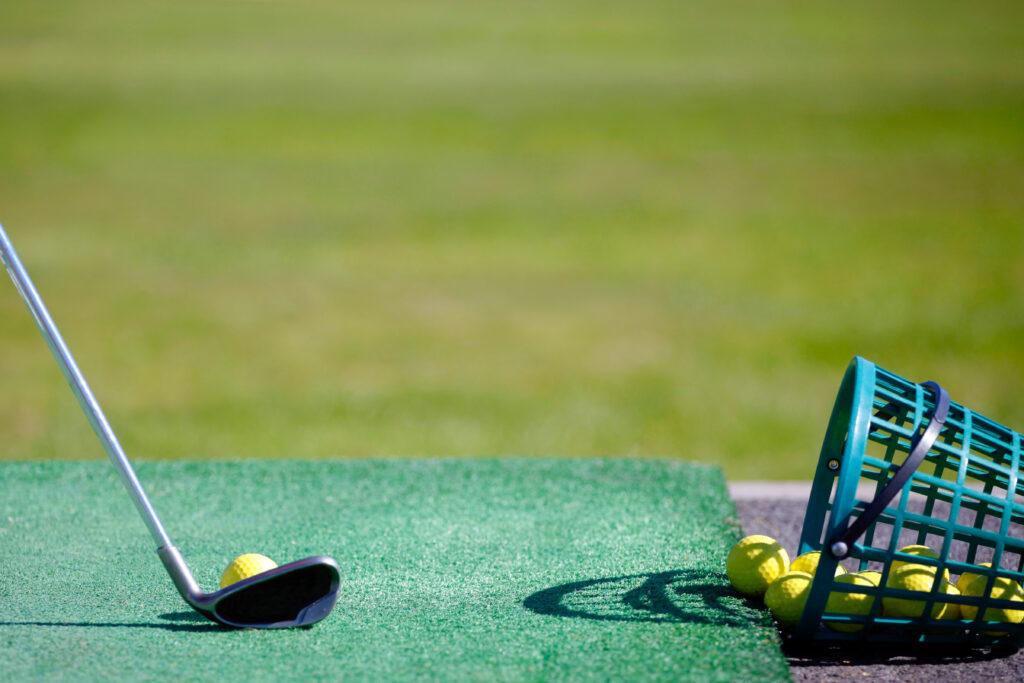
5 Best Golf Ball Colors for High Visibility
By Bill Irwin
What color is your golf ball? If you’ve been in a golf shop or retail outlet lately, you know the days of a simple choice between white and yellow are over. The golf ball section resembles a candy land, with a dazzling array of colors — from orange and pastel blue balls to lime green, neon green, and optic yellow ones. Brands like Volvik and Vice Golf offer full lines of vibrant hues, including matte finishes, each promising high visibility and fun visual flair. Nowadays, golf ball manufacturers promote their most popular balls not only for maximum distance off the tee and soft feel, but also for high visibility. Color is key.
Yet, although we are in the golden—or rather, neon—age—of vibrant, colored golf balls, resistance remains. Almost all professional golfers, as well as an overwhelming majority of highly skilled golfers, still use a white ball. Tradition plays a big role, as do long-standing associations with pigmented balls being unprofessional, tacky, or reserved for driving ranges, mini-golf, and high-handicap amateurs.

Is clinging to the classic white golf ball just tradition, or a missed opportunity? For today’s golfers, especially Millennials and Gen Z, color isn’t just style—it’s strategy. If you’re not exploring what a vibrant golf ball can do for your game, you might be missing out on a smarter, more fun, and way more “you” way to play. Ready to rethink the game? Keep reading—we’ve got the scoop.
Ever feel like your golf ball disappears into thin air? Same.
Golf is unlike any other ball sport: the ball you’re playing with is regularly lost. Simply keeping it in play — or being able to find it — is fundamental to success.
Adding to the challenge, golf often asks you to hit the ball as far away from yourself as possible. Shots can range from inches to over 400 yards, and tracking the ball in flight, then spotting it after it lands, is often difficult. Even well-struck, straight shots can be hard to follow, and most shots curve in some way, whether it’s a fade, draw, slice, or hook. This is true for professionals, and even more so for amateurs and the average golfer.
Overcast skies and variable lighting, tree lines, blind shots, the lay of the land and turf debris make the task of finding your ball even harder. Balls disappear in plain sight, hidden by glare, shadows, trees, leaves, long grass, desert brush, or uneven dew. In the face of these obstacles, high-visibility golf balls can make a meaningful difference in your game. That’s why knowing how visibility works isn’t just interesting — it’s practical knowledge that can help you play better on the golf course.
The Science of Visibility: Which Golf Balls Are Easiest to See
How well a golfer sees their ball comes down to two factors: how the human eye processes light, and how much contrast the ball creates against its surroundings. Despite their long-standing popularity and traditional appeal, white balls can actually be difficult to see—especially in bright sunlight, where glare causes them to blend into the grass or disappear against the sky.
Scientific studies show that the most visible color to the human eye in daylight is yellow-green, which is why tennis balls and softballs moved away from white decades ago. High-optic yellow and bright orange stand out particularly well outdoors, offering strong contrast against green grass and blue skies. That contrast makes bright colored balls easier to track in flight and easier to spot on the ground—especially in low-light conditions like dusk or overcast days.
For golfers who are color vision deficient, high-optic yellow is often the best choice, as it tends to remain distinguishable regardless of color perception differences.
The Power of Visibility: How Color Boosts Your Game
Given all these visual challenges, smart golfers and modern golf ball manufacturers have begun focusing on the best golf ball color—not just for scoring, but for confidence and personal satisfaction. Enter the high-visibility golf ball. Far beyond the standard white, bright colors like yellow, orange, neon green, and even pink or bright red golf balls stand out better against common backdrops like a blue or gray sky, green grass, and shaded areas.
Manufacturers claim that using high-visibility balls will help you score better, not just because you’ll lose fewer balls, but because of the psychological edge they provide. Srixon Research and Development touts the Z-STAR™ X Tour Yellow golf ball for its benefits in visualization, calmnes,s and stress relief. Because you’re more likely to find your ball in deep rough or other trouble spots, you’ll be more relaxed and able to play faster and with better rhythm. You’ll also feel more confident in your shots and committed to your swing—this leads to bolder play and better scoring opportunities.
Of course, another psychological benefit of bright color balls is personal style. Today’s color options let players match their golf ball with their clothing and personality. You can now make a statement with your ball choice, enhancing your vibe on the course. There’s a reason phrases like “look good, feel good, play good,” and “when you look your best, you play your best,” ring true. Your chosen color golf ball can psychologically help you be your best as a golfer.
The story behind golf’s go-to ball color before we share our top picks for high-visibility golf balls, it’s worth looking at how colorful balls have evolved — and why some colors are easier to see than others.
Multi-colored balls aren’t a new idea; they’ve just been overshadowed by tradition. In golf’s early days, players painted their feather-filled balls to make them easier to spot. Red and white were common choices. Well over a hundred years ago, the author Rudyard Kipling and U.S. President Woodrow Wilson famously painted their golf balls red or black to improve visibility while playing in the snow.
White eventually became the dominant color—not just because it stood out against green grass, but because white paint was cheap, effective, and easy to produce. The Rules of Golf have never dictated ball color, but as manufacturers standardized production, white became the norm. Television cemented that standard. White balls looked crisp on screen, and viewers came to associate them with serious play.
Aside from the occasional novelty ball or range balls, whenever golfers were playing on their home course or elsewhere, virtually every ball in their bag was white.

The Optic Era: When Color Teed Off
Mass production of brightly colored golf balls didn’t take off until the 1970s, when new materials and techniques allowed for vibrant hues without sacrificing performance. The era also saw a broader explosion of color in sports. Multi-colored basketballs hit the court, and tennis adopted optic yellow to improve ball tracking for TV viewers. Softball didn’t officially switch to optic yellow until 2013, but high-visibility balls — especially yellow balls — have been widely used since the 1970s.
These changes mirrored trends in road safety and construction—were bright orange and yellow gained visibility. Also, at play as colored balls began making inroads against traditional white was a broader cultural shift toward more expressive individuality, flashier fashion, and visual pop.
Spalding was the first golf ball manufacturer to jump in, releasing Top Flite Optic Yellow and Optic Orange balls in the early 1970s. Other manufacturers like Wilson, Dunlop, and Ram soon followed. Even PING, which began producing white golf balls in the 1970s, introduced the Ping Eye in white, yellow, or orange along with the first two-color Orange/Yellow ball, the Ping Punch, in the early 1980s to enhance visibility in the air. All of these balls were aimed at everyday recreational golfers, not professionals or competitive players.
That changed with the debut of the Wilson Pro Staff premium color series in the early 1980s. These orange and yellow balls matched the construction of Wilson’s top-tier white models and were marketed to serious players, including touring pros. They promised to deliver more distance and the same soft feel as the company’s Tour-oriented white balls. Wilson said the design was inspired by high-visibility safety gear like traffic cones and construction vests — and at one point in the 1980s, multiple colorful models made up more than 20% of the company’s golf ball sales.
While almost every pro stuck with white, a few made history in color. At the 1982 Hawaiian Open, Wayne Levi used an orange ball to become the first PGA Tour player to win using a colored golf ball. Just two months later, Jerry Pate won The Players Championship with an orange ball on the brand-new Stadium Course at TPC Sawgrass.
The New Normal: Bright Balls for Every Golfer
Though the popularity of these colorful golf balls waned by the end of the 1980s, a full-scale resurgence has occurred in the past decade. Today’s vibrant ball scene owes much to brands that have broken with tradition and embraced bold style.
Vice Golf, founded in Germany in 2012, targets younger, more adventurous, and even playfully rebellious golfers. With eye-catching options like neon lime, neon pink, bright orange-red,“drip” and “shade” patterns, and matte finishes, Vice designs its balls to pop visually while making a fashion statement on the course. The Vice Pro models are the company’s colorful answer to Titleist’s Pro V1s for players with faster swing speeds looking for a high-performance ball.
Volvik, based in Seoul, Korea, has also spurred today’s colored-ball revolution. Backed by research into visual contrast, Volvik’s vivid designs quickly gained a following. The company introduced the first matte-finish golf ball, the Volvik Vivid, in 2016. The brand signed high-profile players like Bubba Watson and served as title sponsor of the World Long Drive Championship from 2017 to 2019 — all using its colorful balls. Today, Volvik offers the widest selection of matte colors in the game.
The industry’s top ball makers have followed suit. Bridgestone launched its Lady Precept ball in 2013 with Optic Pink and Optic Yellow options. In 2017, the company added a yellow version of its premium Bridgestone Tour B X model — a sign that high-performance colored balls were gaining serious credibility. While Callaway Supersoft balls in rainbow colors are geared for the average golfer, the Callaway Chrome Soft, a premium Tour soft ball, comes in white and bright yellow for enhanced visibility. Titleist joined the party in 2019 by making its flagship Pro V1 balls — the no. 1 ball among pros and amateurs alike — available in high-visibility yellow.
The Five Best Golf Ball Colors for Visibility
With today’s surge in high-visibility options, choosing a ball color is no longer just about style — it’s also about performance and reducing the risk of lost golf balls. These five stand out for their visibility in different playing conditions.
Neon Yellow
Highly reflective and easy to spot in low light, cloudy skies, or deep green grass. Ideal for overcast days and late afternoons when brightness and contrast matter most. Also, the best choice for most color vision deficiency golfers.
Bright Orange
Provides strong contrast in bright sunlight and against dark, rough, or lush fairways. Especially effective in autumn when grass tones shift, though lit can be harder to see among fallen leaves.
Lime Green
Closest to the eye’s peak sensitivity. A vivid, versatile choice that enhances visibility across a wide range of backgrounds, from rough and shadows to sunlit fairways.
Hot Pink
A bold, uncommon color that pops against most natural surroundings. Performs well in overcast or snowy settings, though it may blend in with some fall foliage or dried grass.
White
The traditional standard. Still highly visible in clear skies and direct sunlight. Most players are accustomed to tracking a white golf ball, and it’s the default color for nearly all premium Tour-level models.
Final Takeaway:
In the full spectrum of golf ball choice, this much is clear: Whether you’re out to lower your score, speed up play, or just make the game a little more fun, color can help. High-visibility balls not only look good — they help you play better. So, the next time you’re looking to put a new ball in your bag, don’t be afraid to skip the white golf ball options and consider other colors. Why not ditch tradition and follow your eyes.
